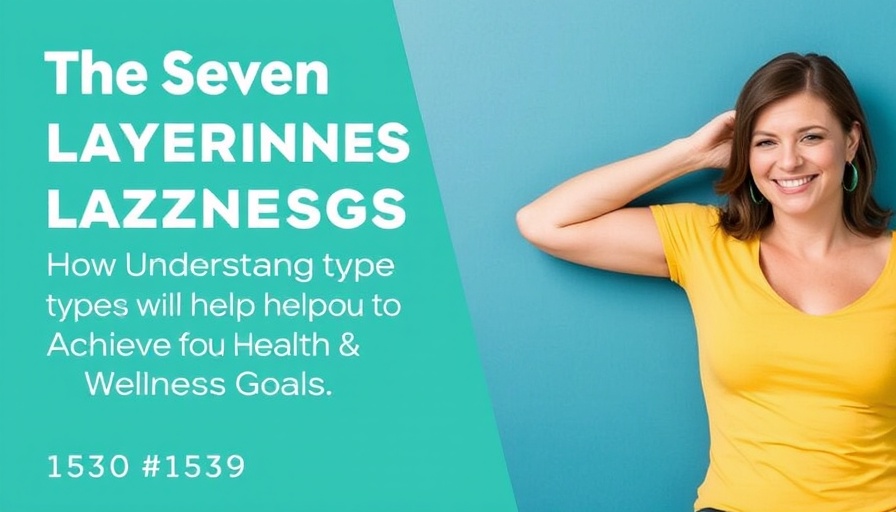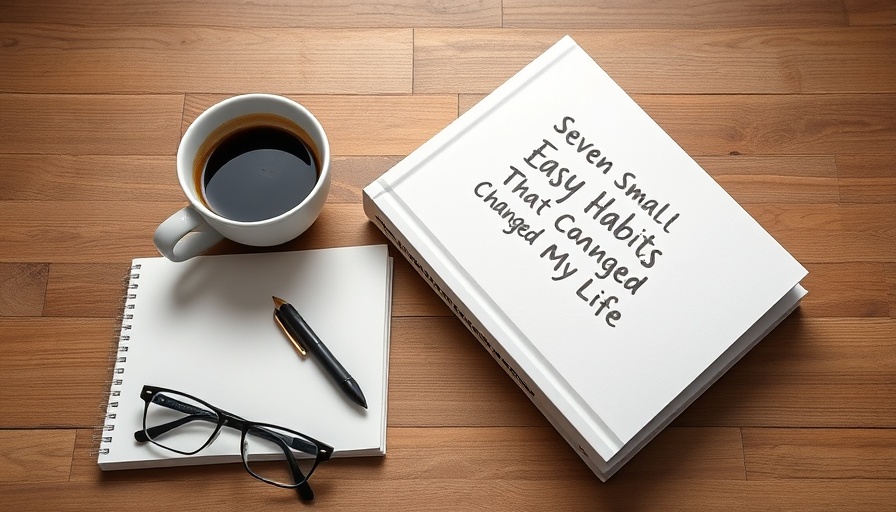
Understanding Laziness: The Key to Your Health Goals
In our fast-paced world, achieving health and wellness goals can feel like an uphill battle. Days shrouded in busyness often overshadow our commitment to leading a healthier lifestyle. But what if the answer to overcoming these hurdles lies in understanding the different types of laziness? Rather than viewing laziness as a personal flaw, we can approach it as an opportunity for growth. Let’s explore the seven types of laziness and how recognizing each can help reshape our journey toward wellness.
Type 1: Physical Laziness—Meet Your Body’s Needs
This form of laziness manifests as a reluctance to engage in physical activity. Often linked to fatigue or a sedentary lifestyle, it's crucial to realize that movement doesn’t always equate to strenuous exercise. Simple actions like taking the stairs, walking during lunch breaks, or engaging in household chores can uplift your energy levels. Incorporating gentle movements into your day can rejuvenate not just your body, but also your spirit.
Type 2: Mental Laziness—Engaging Your Mind
Mental laziness reflects a lack of motivation to pursue cognitive tasks. Perhaps you feel overwhelmed by the influx of information or simply lack inspiration. Combat this by introducing fun and engaging learning experiences into your routine. Podcasts on wellness, interactive courses, or trying out a new hobby can stimulate your brain and revive your passion for personal growth.
Type 3: Emotional Laziness—Navigating Your Feelings
Ignoring your emotions can stall your progress towards health and wellness. Emotional laziness may encourage you to suppress feelings or shun self-reflection. Addressing this type requires courage. Journaling your thoughts or seeking therapy can clarify your emotional landscape, helping you make more aligned choices that resonate with your health goals.
Type 4: Social Laziness—Embracing Connection
Isolation can breed a sedentary lifestyle. Social laziness occurs when we shy away from social interactions that can invigorate our spirits. Whether it's joining a fitness class or participating in community activities, fostering connections with others can reignite motivation and create accountability in your wellness journey.
Type 5: Spiritual Laziness—Finding Your Center
This type covers reluctance to engage in personal spiritual practices. Whether through mindfulness, meditation, or connecting with nature, tapping into spirituality nurtures mental clarity and emotional peace. Dedicating a few moments each day to spiritual reflection can profoundly influence your overall well-being.
Type 6: Habitual Laziness—Breaking the Cycle
Unable to break free from the confines of routine? This habitual laziness solidifies unhealthy patterns. Evaluate your daily routines and identify moments that reinforce inactivity. Implementing small changes—such as dedicating ten minutes daily to a new activity—can vastly alter your trajectory toward health.
Type 7: Procrastination—Conquering Inaction
Finally, procrastination can hinder even the best intentions. Combatting procrastination, like tackling mental laziness, requires setting small achievable goals. Planning your week ahead with actionable steps can set a clear path, making your wellness aspirations feel attainable rather than daunting.
Strategies to Overcome Laziness
Now that we’ve unpacked the types of laziness, how can we act on this awareness? Start by recognizing which type resonates most with you. From there, implement tailored strategies, such as establishing an accountability buddy, setting realistic goals, or incorporating fun twists to your routines. Remember, minor changes yield significant results.
Let Your Awareness Drive Change
By understanding and naming the types of laziness we encounter daily, we illuminate a pathway toward positive behavior change. Embrace the journey towards a healthier lifestyle by reframing how you engage with laziness—transforming it from a barrier into a catalyst for well-being. Acknowledgment of these types is the crucial first step toward achieving your health and wellness goals!
 Add Row
Add Row  Add
Add 




Write A Comment